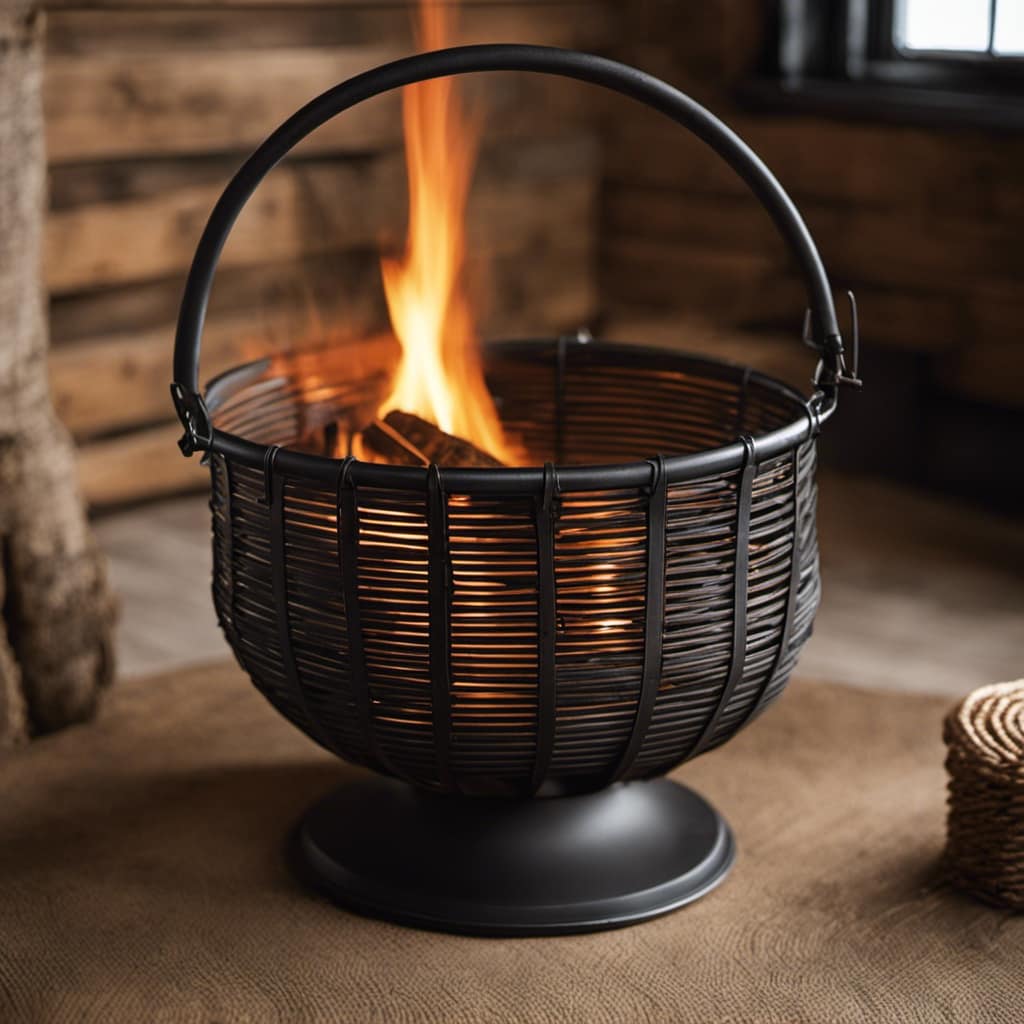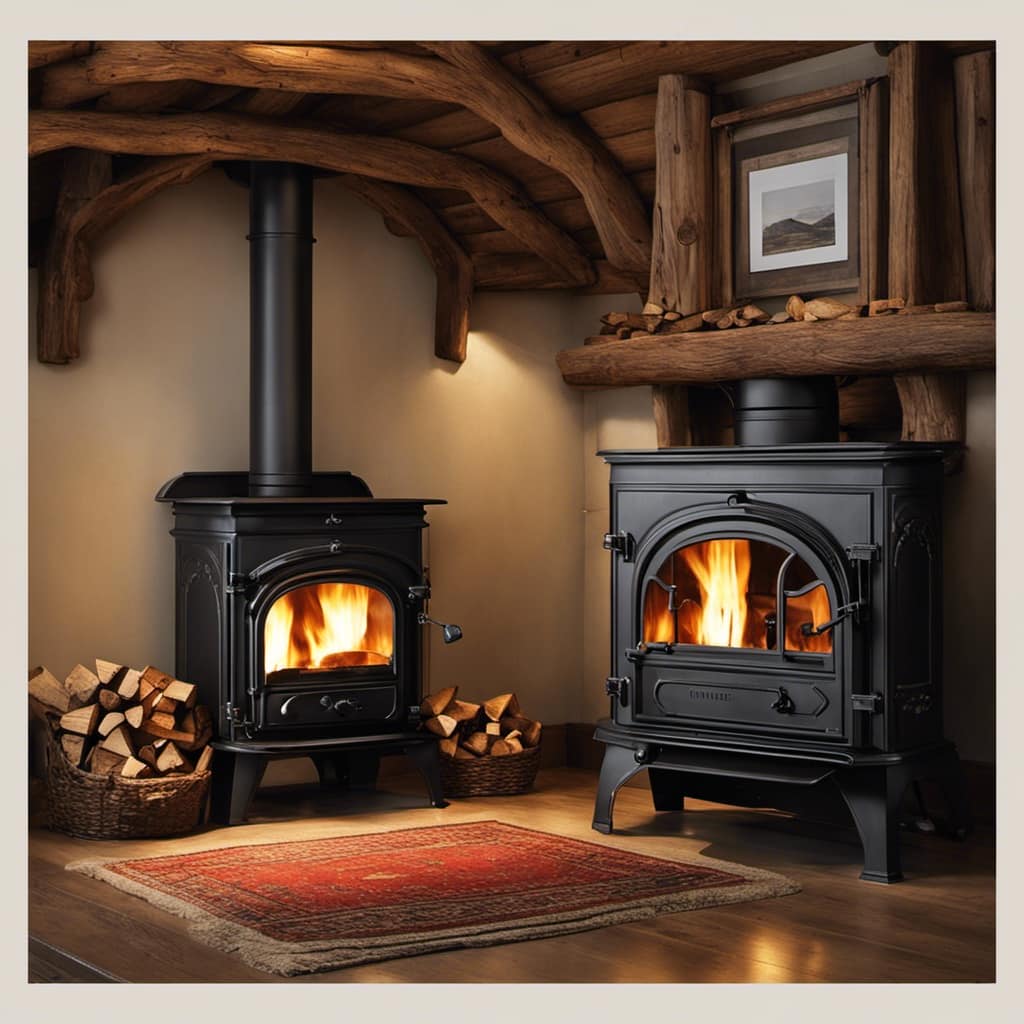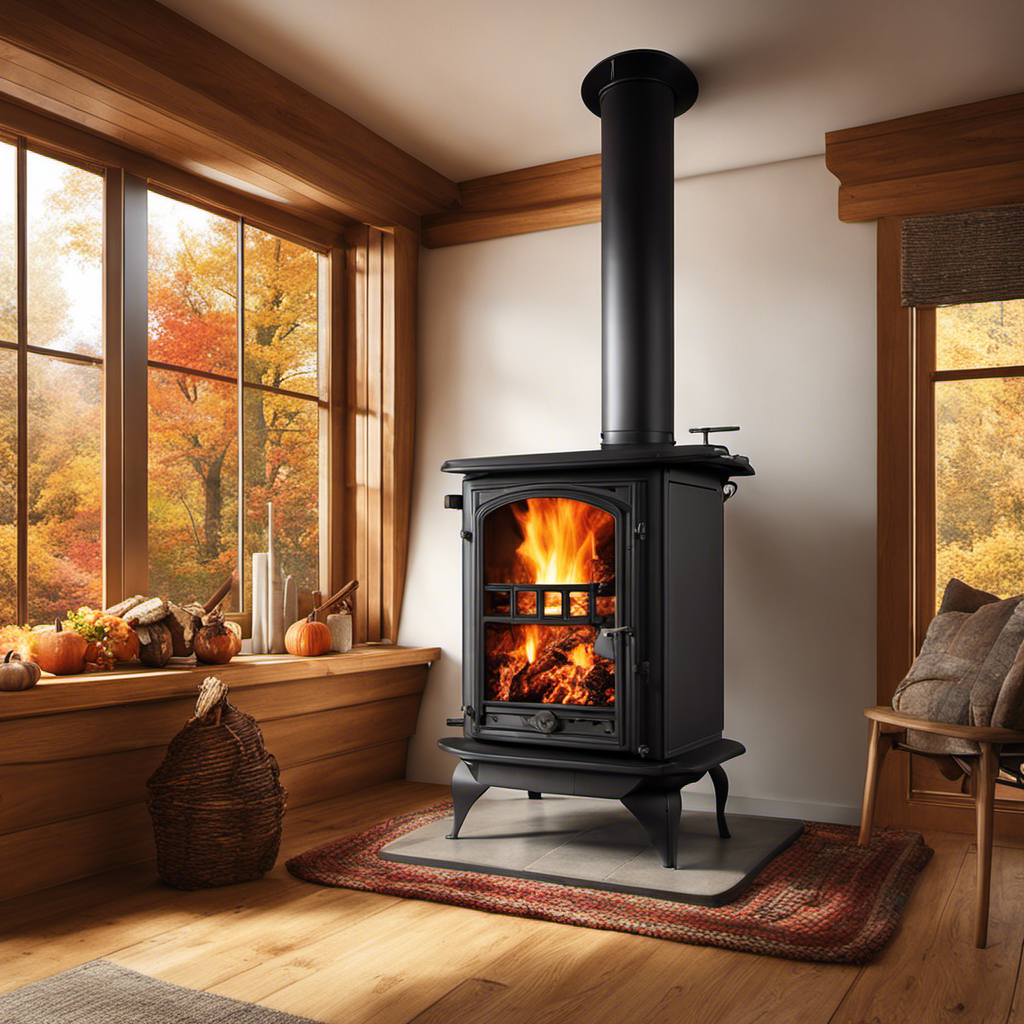
As a frequent user of a wood stove, I have come to understand the importance of consistent maintenance. A crucial task involves removing the stove pipe for the purposes of cleaning or repairs.
In this guide, I’ll walk you through the step-by-step process of safely disconnecting and removing the stove pipe sections.
With the right tools and a bit of know-how, you’ll be able to keep your wood stove operating efficiently and extend its lifespan.
So, let’s dive in and get started!

Key Takeaways
- Wear heat-resistant gloves and safety goggles for protection during the removal process.
- Ensure the stove is completely cooled down before starting the removal process.
- Use the necessary tools such as a screwdriver, pliers, and a pipe wrench for removing the stove pipe.
- Clean and inspect the stove pipe before storing it in a dry and secure location.
Safety Precautions
I always make sure to follow the safety precautions when removing the stove pipe from my wood stove. Safety measures are crucial to prevent accidents and ensure a smooth removal process.
Firstly, I wear heat-resistant gloves to protect my hands from burns. These gloves provide a secure grip and prevent any accidental slips.
Secondly, I ensure that the stove is completely cooled down before starting the removal process. This eliminates the risk of burns from hot surfaces.
Additionally, I use a sturdy ladder or step stool to safely reach the stove pipe. It’s important to maintain balance and stability during the removal.
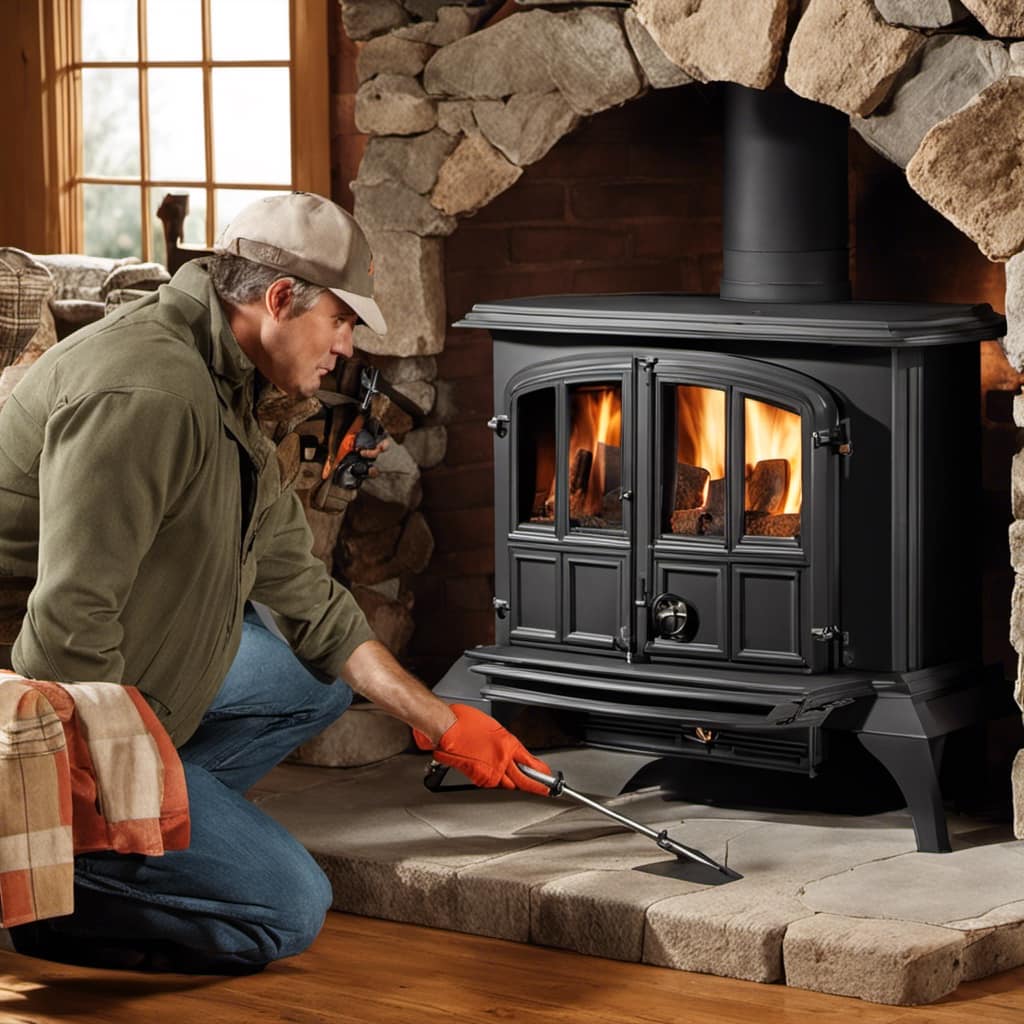
Lastly, I double-check that all screws and connections are properly loosened before gently removing the stove pipe. Following these safety measures and handling techniques guarantees a safe and efficient removal of the stove pipe.
Gather the Necessary Tools
To remove the stove pipe, I gather the necessary tools, including a screwdriver and pliers.
Replacing or repairing a stove pipe requires careful attention to detail. The first step is to ensure the stove isn’t in use and has cooled down completely. Safety goggles and gloves should be worn to protect against any sharp edges or debris.
Using the screwdriver, I carefully loosen the screws that hold the stove pipe in place. Once the screws are removed, I use the pliers to disconnect any clamps or brackets securing the pipe. It’s important to handle the pipe with caution to avoid any damage or injury.
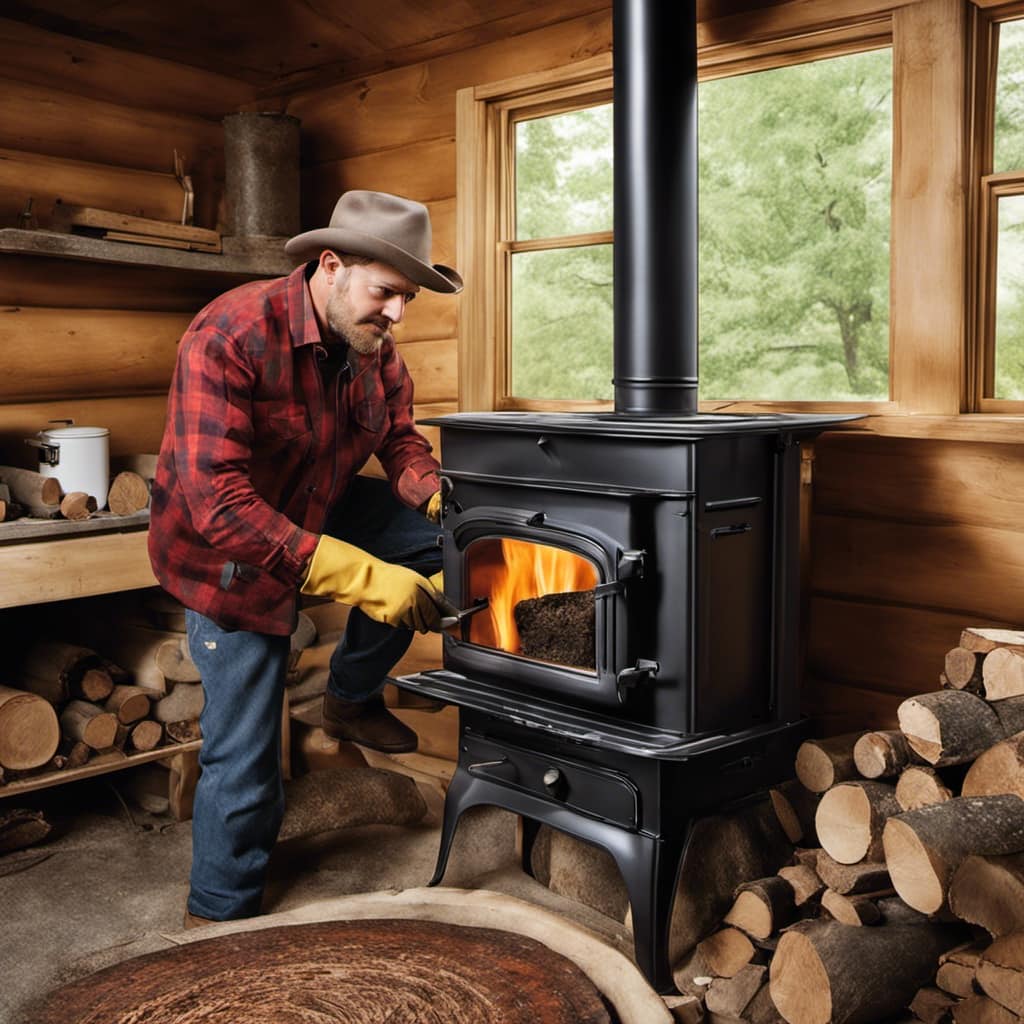
With the stove pipe now disconnected from the wood stove, I’m ready to move on to the next step of the process.
Disconnecting the Stove Pipe From the Wood Stove
Carefully slide the stove pipe off of the wood stove to disconnect it. When disconnecting the stove pipe from a wood stove, it is important to follow proper procedures to ensure a safe and successful removal. Here are the steps to disconnect the stove pipe:
-
Turn off the stove: Before starting the disconnection process, make sure the wood stove is completely turned off and cooled down.
-
Remove the screws: Locate the screws that secure the stove pipe to the stove and use a screwdriver to remove them. Set the screws aside for reconnection later.
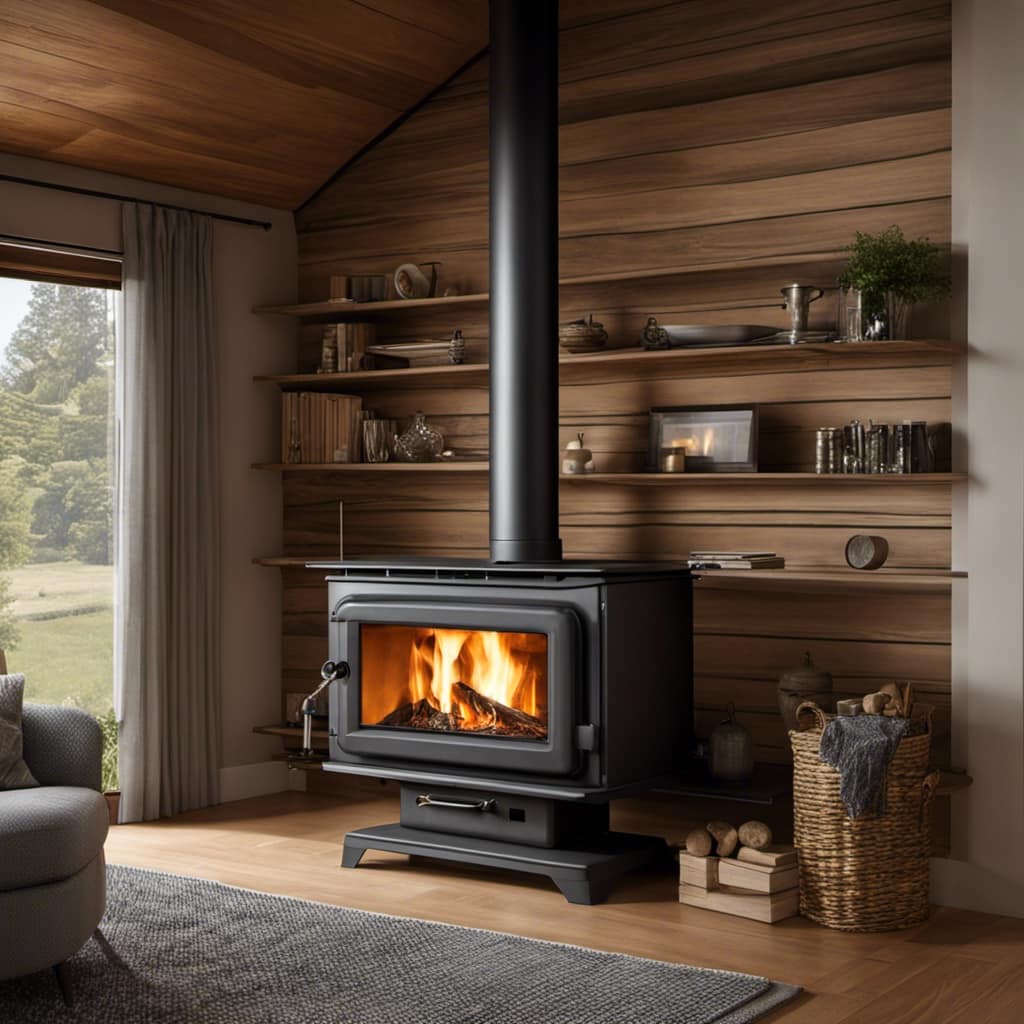
-
Slide the stove pipe off: With the screws removed, gently slide the stove pipe off the wood stove. Be cautious of any remaining heat and wear protective gloves if necessary.
By following these steps, you should be able to disconnect the stove pipe from the wood stove safely and without issues. If you encounter any problems or difficulties, refer to the troubleshooting tips below:
| Common Stove Pipe Issues | Troubleshooting |
|---|---|
| Leaks | Check for gaps or loose connections. Use high-temperature silicone sealant to seal any leaks. |
| Blockages | Inspect the stove pipe for any blockages or debris. Clear any obstructions using a chimney brush or similar tool. |
| Rust or corrosion | If you notice rust or corrosion on the stove pipe, clean it with a wire brush and apply a high-temperature paint or coating to prevent further damage. |
Remember to reconnect the stove pipe securely after troubleshooting and ensure proper ventilation for the wood stove.
Removing the Stove Pipe Sections
Usually, I disconnect the stove pipe by unscrewing the sections and sliding them off the wood stove. However, there are times when the stove pipe needs to be completely removed for various reasons, such as replacing stove pipe or troubleshooting stove pipe leaks.

To remove the stove pipe sections, I start by carefully inspecting the connection points for any signs of damage or wear. If there are no issues, I begin by unscrewing the couplings or clamps that hold the sections together.
Once the couplings are loosened, I gently slide the sections apart, taking care not to damage the pipe or the stove. If there are any stubborn sections that won’t budge, I use a pipe wrench or pliers to loosen them.
It’s crucial to handle the stove pipe with caution to prevent any injuries or further damage.
Cleaning and Storing the Stove Pipe
I thoroughly clean and carefully store the stove pipe after each use to maintain its efficiency and prolong its lifespan.
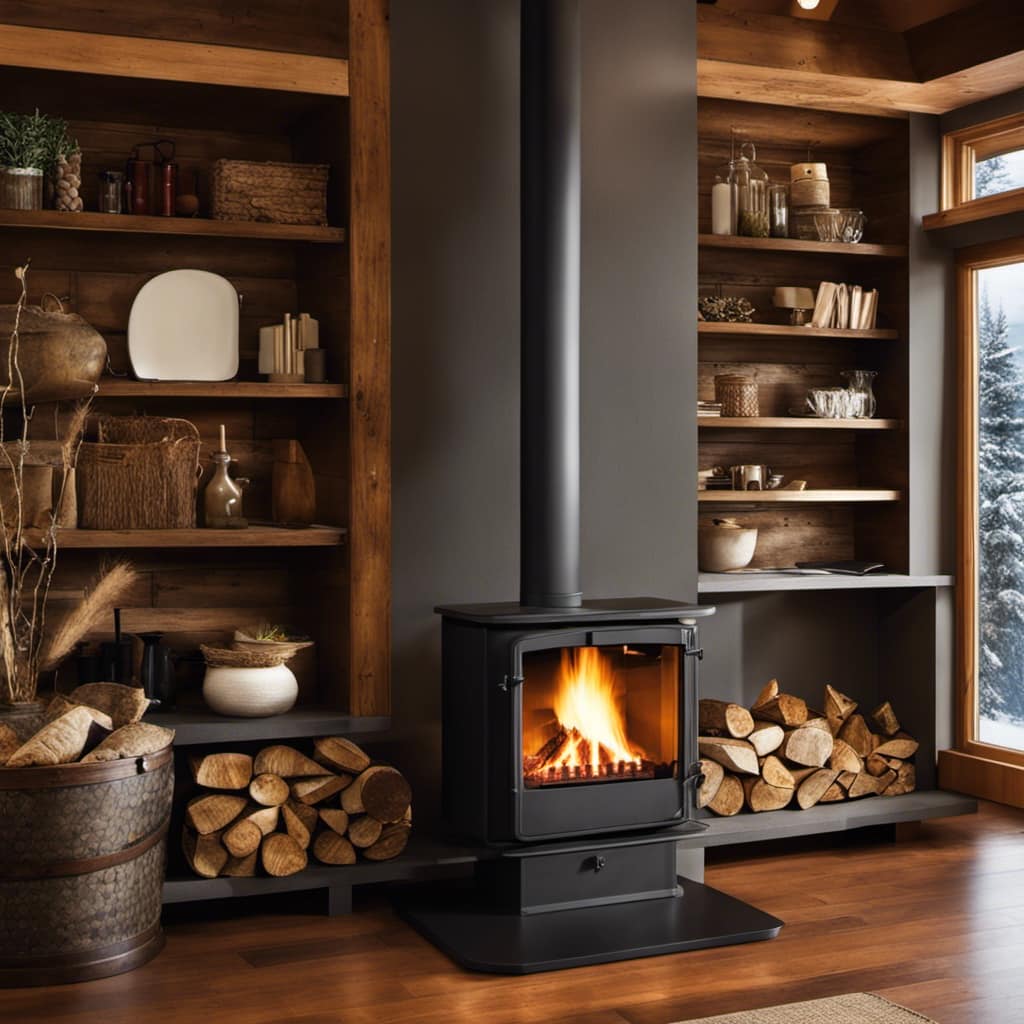
Cleaning the stove pipe is essential to prevent the buildup of creosote, a flammable substance that can cause chimney fires. To clean the stove pipe, I use a chimney brush specifically designed for this purpose. I insert the brush into the pipe and scrub the interior walls, removing any soot or debris.
After cleaning, I inspect the pipe for any signs of damage or wear. If necessary, I replace any damaged sections to ensure proper functioning.
Once the pipe is clean and inspected, I carefully store it in a dry and secure location to protect it from damage and corrosion.
Properly maintaining the stove pipe is crucial for safe and efficient operation of the wood stove.
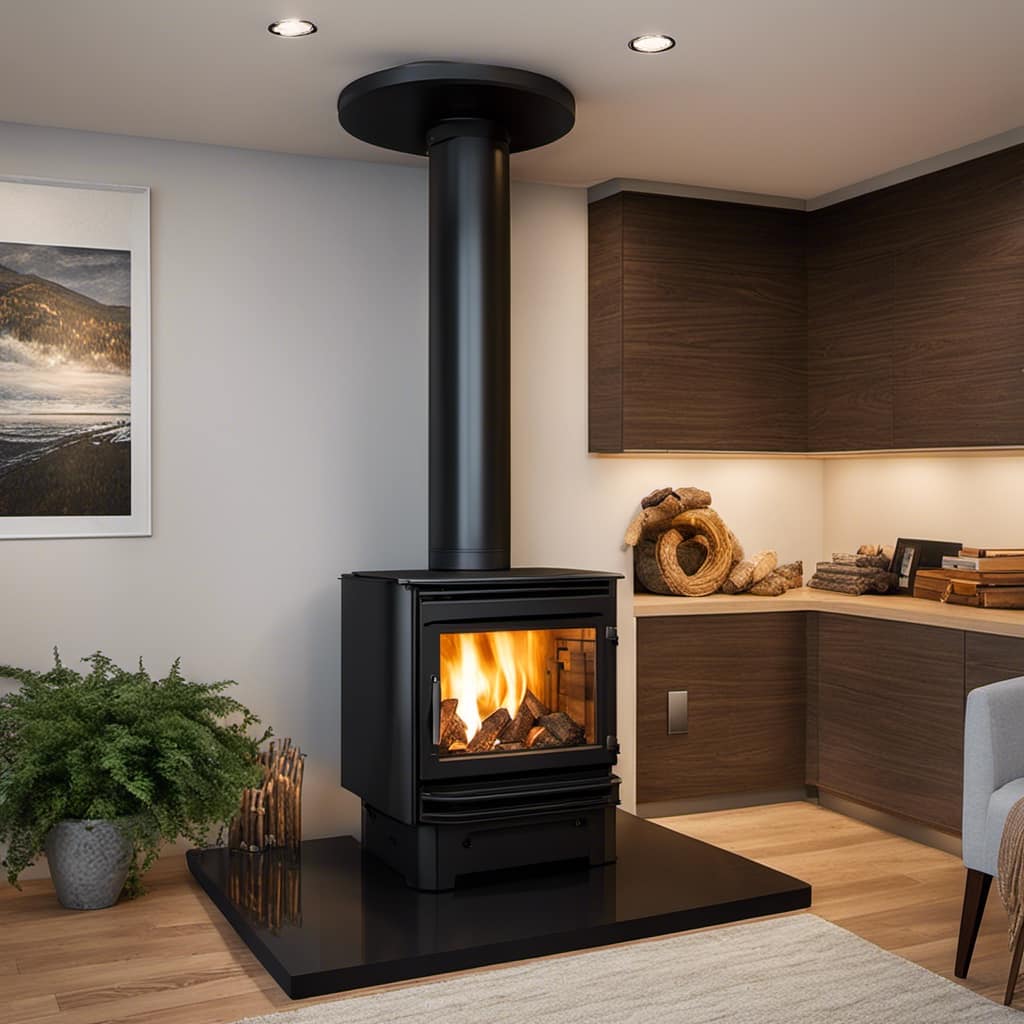
Frequently Asked Questions
How Do I Know if It’s Safe to Remove the Stove Pipe From My Wood Stove?
Before removing the stove pipe, it’s crucial to ensure safety. Check for any signs of damage or wear, such as rust or cracks. Take necessary precautions, like wearing protective gloves and goggles, to avoid injury.
Can I Reuse the Stove Pipe After Removing It?
Yes, you can reuse the stove pipe after removing it. However, it is important to inspect it for any damage or wear. If it’s in good condition, you can reinstall it or consider alternative stove pipe options.
What Should I Do if the Stove Pipe Is Stuck and Difficult to Remove?
If the stove pipe is stuck and difficult to remove, I would try troubleshooting techniques such as applying penetrating oil, using a pipe wrench, or applying heat to loosen the connections.
Is It Necessary to Wear Protective Gear While Removing the Stove Pipe?
Wearing protective gear is essential when removing a stove pipe. Safety precautions should always be taken to prevent injuries. It is important to prioritize personal safety while working with potentially hazardous materials.

How Often Should I Clean and Inspect the Stove Pipe for Maintenance Purposes?
Cleaning and inspecting the stove pipe regularly is crucial for maintenance. I follow a strict schedule and use a detailed checklist. It’s like a detective mission, hunting down any potential issues and ensuring my wood stove operates smoothly.
Conclusion
In conclusion, removing the stove pipe from a wood stove requires caution and the right tools. It’s important to follow safety precautions to prevent accidents.
By disconnecting the stove pipe and removing the sections carefully, you can ensure a clean and efficient wood stove. Remember to clean and store the stove pipe properly to maintain its functionality.
Just as a well-maintained stove pipe ensures a smooth flow of heat, taking proper care of our own lives can lead to a more harmonious and efficient existence.
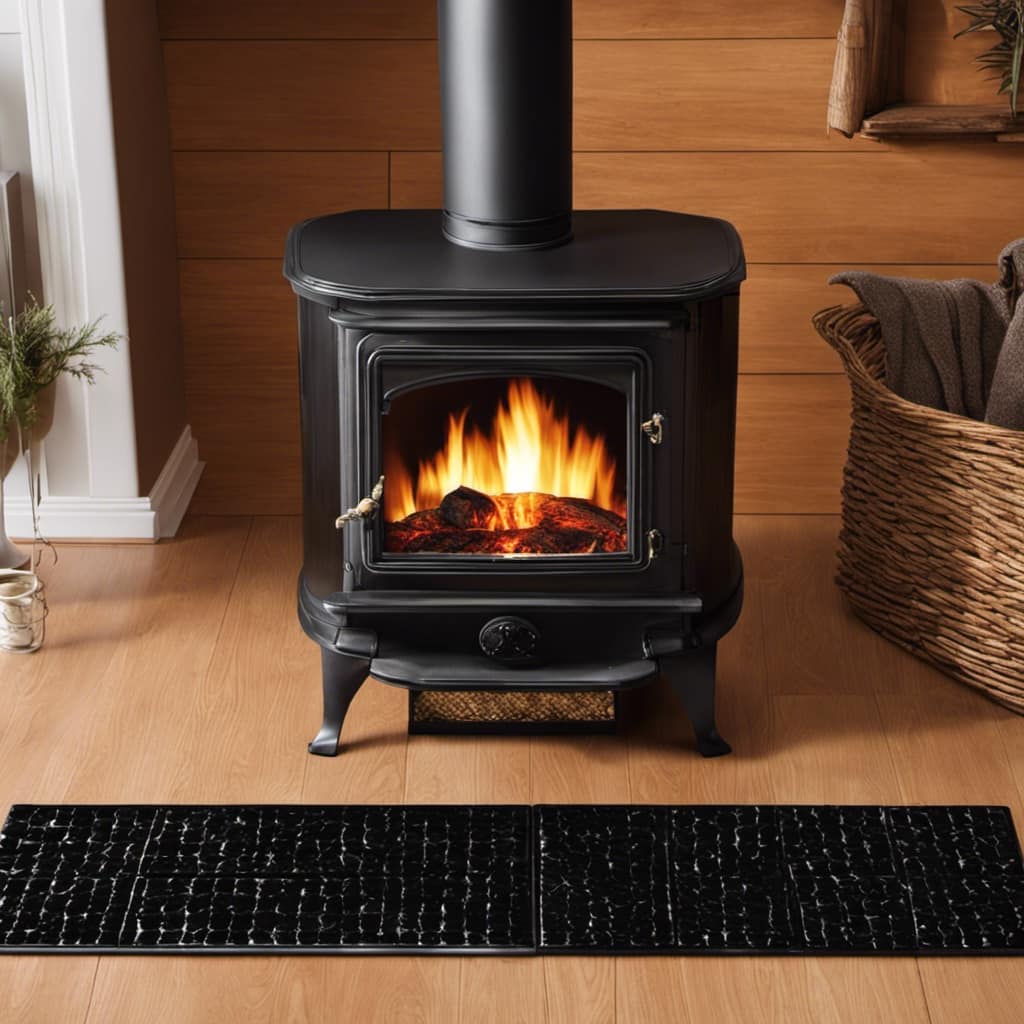
Growing up surrounded by the vast beauty of nature, Sierra was always drawn to the call of the wild. While others sought the comfort of the familiar, she ventured out, embracing the unpredictable and finding stories in the heartbeat of nature.
At the epicenter of every remarkable venture lies a dynamic team—a fusion of diverse talents, visions, and passions. The essence of Best Small Wood Stoves is crafted and refined by such a trio: Sierra, Logan, and Terra. Their collective expertise has transformed the platform into a leading authority on small wood stoves, radiating warmth and knowledge in equal measure.

